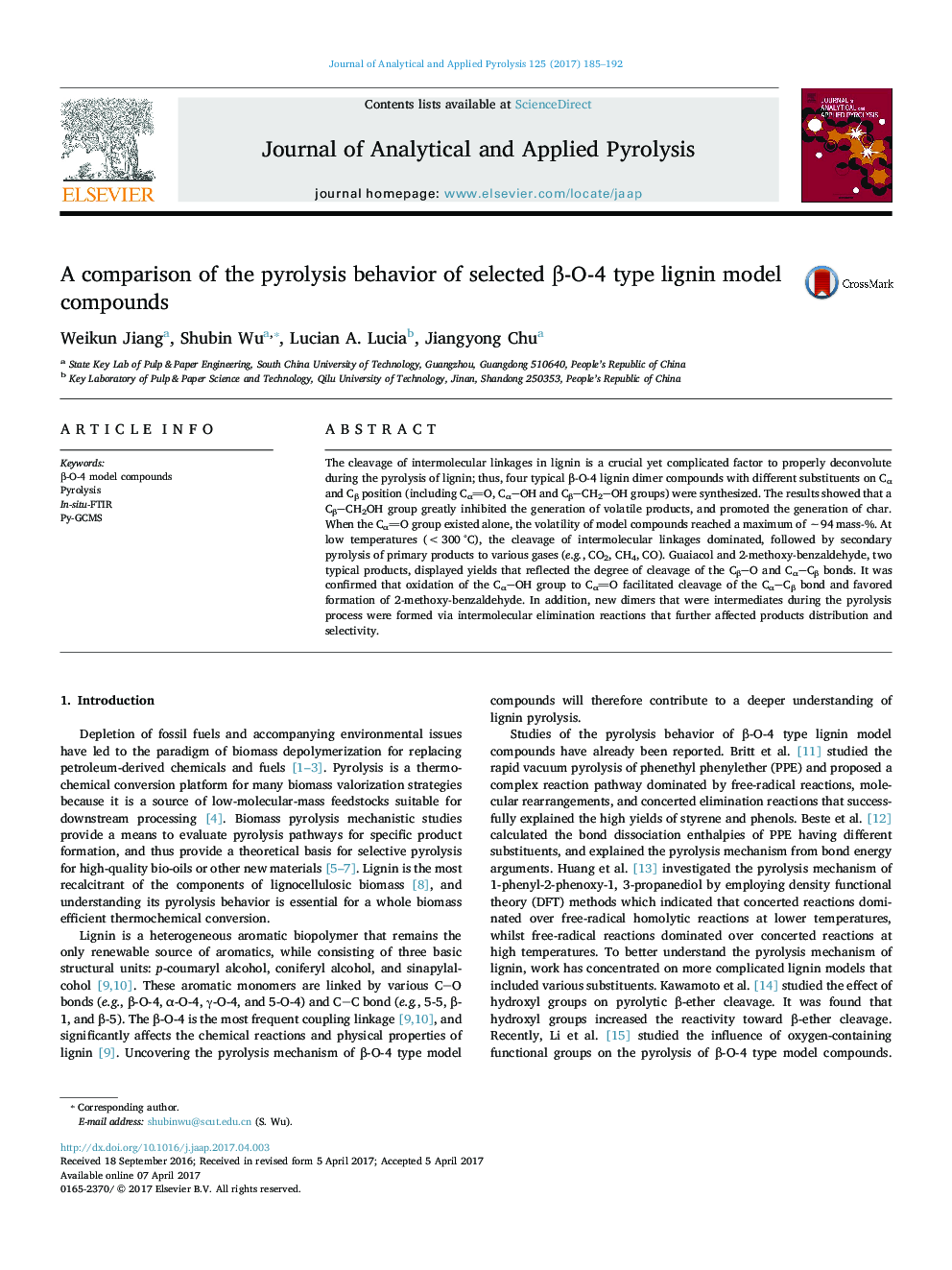| Article ID | Journal | Published Year | Pages | File Type |
|---|---|---|---|---|
| 5134492 | Journal of Analytical and Applied Pyrolysis | 2017 | 8 Pages |
â¢The effect of different substituents on pyrolytic β-ether cleavage was studied.â¢The yields of guaiacol and 2-methoxy-benzaldehyde reflected the degree of cleavage of the CβO and CαCβ bond.â¢Oxidation of the CαOH group to CαO facilitated cleavage of the CαCβ bond.â¢New dimers were found and further affected products' distribution and selectivity.
The cleavage of intermolecular linkages in lignin is a crucial yet complicated factor to properly deconvolute during the pyrolysis of lignin; thus, four typical β-O-4 lignin dimer compounds with different substituents on Cα and Cβ position (including CαO, CαOH and CβCH2OH groups) were synthesized. The results showed that a CβCH2OH group greatly inhibited the generation of volatile products, and promoted the generation of char. When the CαO group existed alone, the volatility of model compounds reached a maximum of â¼94 mass-%. At low temperatures (<300 °C), the cleavage of intermolecular linkages dominated, followed by secondary pyrolysis of primary products to various gases (e.g., CO2, CH4, CO). Guaiacol and 2-methoxy-benzaldehyde, two typical products, displayed yields that reflected the degree of cleavage of the CβO and CαCβ bonds. It was confirmed that oxidation of the CαOH group to CαO facilitated cleavage of the CαCβ bond and favored formation of 2-methoxy-benzaldehyde. In addition, new dimers that were intermediates during the pyrolysis process were formed via intermolecular elimination reactions that further affected products distribution and selectivity.
